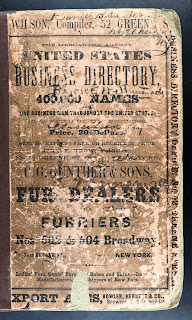I've seen lots of graphics lately showing how many direct ancestors we each have. Two parents, four grandparents, eight great grandparents, etc. It adds up fast!
Since I've been lucky enough to find a handful of 5th great grandparents lately, I thought it would be a good exercise to see where I stand.
I made a spreadsheet you can download with placeholders for grandparents in one column, great grandparents in the next column, and so on through 10th great grandparents.
Update: I've made a revised spreadsheet to include color coding for your four basic tree branches: one color for each grandparent. I've also created a row at the top to show how many ancestors we each have for each generation.
Then I used Family Tree Maker software to create a chart of my ancestors, labeling the generations. I scrolled across my chart and filled in the blanks on the spreadsheet.
 |
| Color coding the 4 branches helps a lot. |
My results are mixed. When I identified four of my 8th great grandparents and four of my 9th great grandparents, I couldn't have been happier. But now I can see that they aren't even the tip of the iceberg. They're a crystal of the iceberg!
I'm missing 23 of my 64 4th great grandparents. After that, I'm not even counting. Yet.
On the plus side, now I can focus my work on finding as many of the missing "younger" generations as I can. (See "5 Steps to Grow Your Italian Family Tree" and "How I Gained 2 More Generations in 1 Day".)
See what this progress report can tell you about your research!











